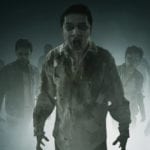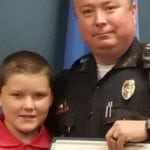 Weird Stuff
Weird Stuff  Weird Stuff
Weird Stuff  Mysteries
Mysteries 10 Tragic Disappearances and Deaths in Joshua Tree National Park
 History
History 10 Ways Childhood Really Sucked in the Old West
 Music
Music 10 Name Origins of Famous Bands from the 1990s
 Religion
Religion 10 Biggest Turnarounds by the Catholic Church
 Weird Stuff
Weird Stuff 10 Unbelievable Times Laws Had Unintended Consequences
 Humans
Humans Ten Historic Women Who Deserve Way More Credit Than They Got
 Movies and TV
Movies and TV 10 Films That Spawned Major Lawsuits
 History
History Ten Times Towns Were Wiped Off the Face of the Earth
 Creepy
Creepy 10 of the Most Disturbingly Haunted Public Houses in the UK
 Weird Stuff
Weird Stuff 10 Niche Subcultures That Are More Popular Than You Might Think
 Mysteries
Mysteries 10 Tragic Disappearances and Deaths in Joshua Tree National Park
 History
History 10 Ways Childhood Really Sucked in the Old West
Who's Behind Listverse?

Jamie Frater
Head Editor
Jamie founded Listverse due to an insatiable desire to share fascinating, obscure, and bizarre facts. He has been a guest speaker on numerous national radio and television stations and is a five time published author.
More About Us Music
Music 10 Name Origins of Famous Bands from the 1990s
 Religion
Religion 10 Biggest Turnarounds by the Catholic Church
 Weird Stuff
Weird Stuff 10 Unbelievable Times Laws Had Unintended Consequences
 Humans
Humans Ten Historic Women Who Deserve Way More Credit Than They Got
 Movies and TV
Movies and TV 10 Films That Spawned Major Lawsuits
 History
History Ten Times Towns Were Wiped Off the Face of the Earth
 Creepy
Creepy 10 of the Most Disturbingly Haunted Public Houses in the UK
10 Awesome Theories In Zombie Science
Over the past few years, zombies have taken pop culture by storm. We love them (perhaps inexplicably), and some of us are even preparing for the day the zombie apocalypse starts for real. And some of us are really, really looking forward to it.
It’s not as crazy as it sounds, either, and it turns out there are a lot of valuable things that can be learned from the study of zombies. Some things are serious, some are fun, but they’re all pretty fascinating.
10Smelling Like The Dead Will Work
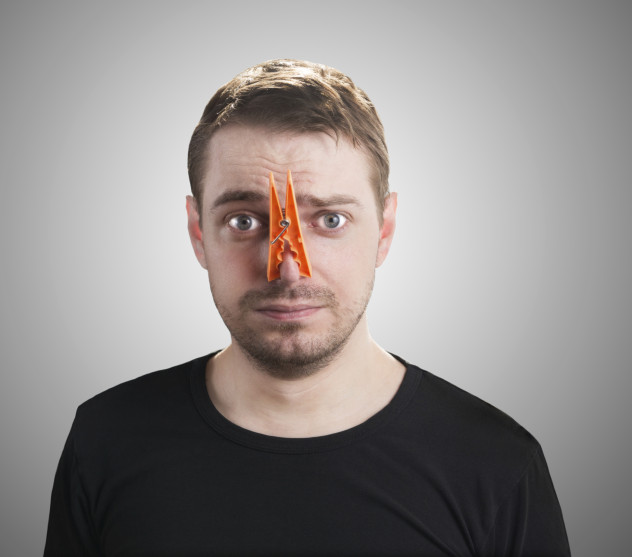
It’s one of the standard ways that the heroes always manage to get through a zombie horde at some point. Smear some blood and guts on yourself, walk slowly, and don’t draw attention to yourself. But will it work?
Science—and zombie theory—suggests that it’s a completely legit way to get through a mob of hungry zombies. According to University of Nebraska–Lincoln chemist and researcher Raychelle Burks, it all has to do with why zombies try to eat the living and not their own kind. Since they have limited mental faculties, part of what they’re actually working with has to be rooted in the basics like their sense of smell. It’s logical that they use smell to identify who’s another zombie and who’s a warm, tasty meal, so smelling like a zombie should work.
The pop culture way of smelling like the dead (covering yourself in guts) might work in a pinch, but it’s not very practical in the end. So Burks decided that every zombie apocalypse prep kit needed some death cologne. She mixed chemistry and zombies to come up with Eau de Death. The cologne would have to be designed to be mass-produced if it would be a viable product, and it would contain things like sulfhydryl methanethiol (for the rotten egg smell) and a couple organic amines (putresine and cadaverine) to mimic the smell of decomposition. They’ve also found how they can use a pretty unlikely type of bacteria, none other than E. coli, to facilitate the chemical reaction needed for mass production of the potentially life-saving cologne.
9The Spread Of The Pop Culture Zombie Disease
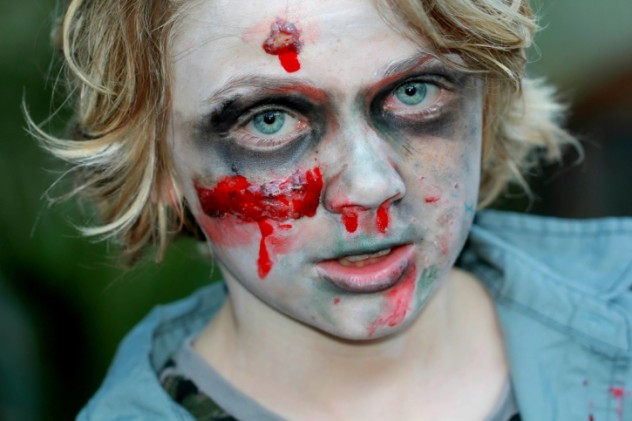
According to Utah State University graduate student Sarah Reehl, zombies aren’t just a pop culture phenomenon. And pop culture phenomena themselves spread like a zombie plague. Using a SIR model (which stands for Susceptible, Infected, and Recovered), she plotted linguistic trends over past years in order to get a feel for how pop culture words, ideas, and images spread and how long they last. Her model included looking at how likely trends were to spread from person to person, how long they would remain popular, and how often something would be used. The baseline for the data and the model were the words “groovy” and “jitney” (a slang term for a US nickel) to see how the terms gained and lost popularity throughout the massive amount of documents that Google has stored in its great digital storehouse in the sky.
She then applied it to the term “zombie” and, according to the numbers, the pop culture zombie plague will continue to hold firmly over the next 25 years or so, and it’ll eventually be just as popular as other mythical monsters like the vampire. The prediction is that zombie fever will be most widespread in 2038, and it won’t fade away until sometime around 2080.
8Animals Are Our First Defense

While hordes of wandering zombies might be a pretty terrifying sight for us to witness, there are a variety of animals that would view the whole thing not as the end of the world but as a pretty extensive lunchtime buffet. National Wildlife Federation naturalist David Mizejewski says that it’s not surprising that when we think of zombie hordes our disgust overrides our awareness that we have some pretty heavy hitters on our side—animals.
Vultures alone would prove devastating to zombies, and that’s a pretty disturbing scientific fact. When you donate your body to science, you never really know what it’s going to end up doing, and one body donated to Texas State University’s Forensic Anthropology Research Facility was eaten by vultures in the name of science. The facility has “an outdoor human decomposition laboratory,” and researchers left a human body outside for the vultures to see what kind of damage they could really do. There’s a practical reason, of course, as bodies are found in outdoor crime scenes all the time, and knowing what happens to them in various settings and scenarios is crucial to coming up with a forensic timeline. But they found something impressively disturbing: A group of vultures descending on a human corpse can reduce it to nothing but bones in five hours.
And, in the wake of a widespread zombie apocalypse, vultures wouldn’t be alone. Other birds of prey, along with scavengers like crows, would be more than happy to get a belly full of zombie flesh. There are also large predators, like bears, that wouldn’t think twice before finishing off a zombie. Zombies approaching animals of a more vegetarian tendency would still have a good chance of being reduced to a harmless pile of mush, and there are plenty of reptiles and insects that would help with the clean-up.
7They’re Suffering From Consciousness Deficit Hypoactivity Disorder
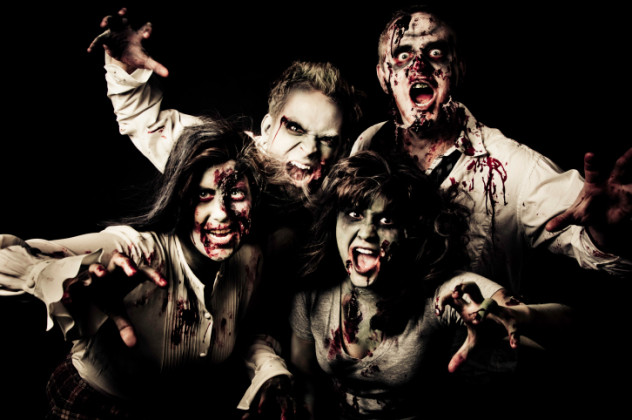
With all the difficulties they have in communicating, it seems pretty straightforward that it would be impossible to psychoanalyze a zombie. But zombie researcher (and University of California–San Diego neuroscientist) Bradley Voytek and colleague (and Carnegie Mellon professor) Timothy Verstynen have compiled everything we know about the brain function of a zombie and they’ve come up with a pretty complete diagnosis.
They looked at the symptoms and reverse-engineered the idea of what activity in the zombie brain would look like. Most zombies display signs of memory loss and attacking friends and family as they would attack a stranger. That means that the hippocampus is no longer functioning (although different types of zombies might retain some level of memory function). They’re capable of movement, but not human movement, suggesting that the cerebellum is still functioning but has atrophied or been somehow damaged. And aggression, along with the drive to act on base impulses, means that there’s been damage to the orbital frontal cortex limiting their ability to control the most basic instincts that drive human desires and needs.
They also haven’t lost the ability to speak, but they’ve usually lost the ability of speech (which are two different things). While they’re still physically capable of making sounds, they can’t form words which suggests damage or decay of the areas in the brain that allow us to understand words and translate our own thoughts into words (Wernicke’s area and Broca’s area, respectively).
The brain map that was created based on these observations of typical zombies was then given a term that defines the medical condition that humans with brains in this state are suffering from. It’s called consciousness deficit hypoactivity disorder, or CDHD.
6The Best Place To Wait It Out

As it’s usually described, the zombie apocalypse is pretty unlikely. Not that it’s not going to happen, but it’s probably not going to happen exactly like it does in pop culture. There are almost always the obligatory newscasts going on in the background somewhere with terrified newsreaders reciting the names of the cities that have fallen and showing pictures of hordes of undead marching across fields and city streets alike.
When it does happen, it’ll undoubtedly be a much slower process, and statisticians at Cornell University have looked at just how it’s going to spread. Based on the idea that it’s a virus or illness outbreak that’s turning people into zombies, it’s likely to spread through a major city in a matter of a few days. Outlying and rural areas, though, could remain pretty unaffected for months before the virus gets out that far. And, hopefully, by that time it would have been contained or even cured. And, if you’re in the continental US, one of the last places to be impacted would be the Rocky Mountains (although that might change now that everyone knows to head there).
There are a lot of variables when it comes to figuring out just how fast the infection would spread. When generating the model, researchers looked at things like how fast zombies were moving, how quickly an infection set in, and whether or not it’s contained (or if infected people have enough time to hop on a plane and spread the disease elsewhere). Like many other areas of zombie science, it’s also an interesting practical look at how disease spreads.
5Zombies In Space

In 2014, San Francisco State University professor Stephen Kane published a paper called “A Necro-Biological Explanation for the Fermi Paradox.” It was published on April Fools’ Day, but the idea behind the paper is pretty intriguing.
The Fermi Paradox looks at the number of planets nearby, the likelihood that they’re inhabited by something, and then asks the question of why we haven’t been contacted yet. The statistical likelihood of nearby aliens makes it pretty bizarre that we haven’t made contact with anyone else yet and, according to Kane, it could be because some of those planets have been infected with SNAP, or Spontaneous Necro-Animation Psychosis.
The theory goes something like this: Earth has had plenty of time to develop all sorts of nasty diseases. We’ve seen the evolution of things like influenza, cholera, and smallpox. We’ve seen huge plagues, and we’ve had large percentages of the human population wiped out by them. The chances of similar things having developed on other planets is pretty significant even if you’re just talking about the sort of plagues that come with the zombie apocalypse.
Kane (who actually is a well-respected teacher and astronomer) takes the Drake Equation and adapts it to look at nearby planets and a handful of variables, like the chances of bearing civilization, how long these civilizations might have been around, and added in the idea of the chances of the evolution of a necro-virus.
According to his calculations, he’s found that within only 100 parsecs of our planet there are more than 2,500 planets that have been infected with zombies. He goes on to argue that it makes a lot of sense. Based on the likelihood of intelligent life somewhere up in space, someone should have stumbled upon us already. But, with the presence of SNAP, it would only take an intelligent alien civilization one fateful journey to an infected planet to spread that infection to other planets, meaning there might be a very good reason why we haven’t made alien contact yet: space zombies.
4Zombie Ethics And Cognitive Dissonance
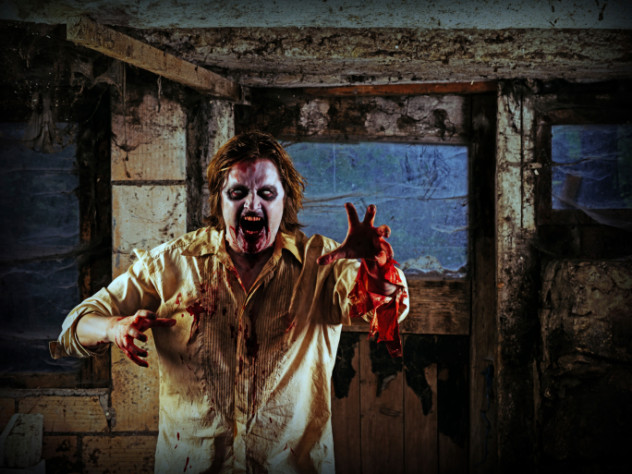
From our place on the sofa, it seems like a pretty clear-cut thing. When it comes down to killing a zombie or having it eat you, there doesn’t seem to be any real choice to be made. There is, though, and it all has to do with cognitive dissonance.
The idea goes back to 1956 when the term was created by a psychologist looking at end-of-the-world believers and how they dealt with the continued existence of life as we know it. It’s what happens when a person is faced with two beliefs or truths that completely conflict with each other. In the zombie apocalypse, those truths are the idea that it’s wrong to kill people but that’s exactly what you want to do if you want to survive.
It also presents an interesting scenario for psychologists to look at just how people deal with the problems faced by two conflicting truths, which is often to adjust their version of the truth until the two are no longer in conflict. When it comes to zombies, there are a couple different ways that people can adjust the truth to fit into the guidelines of what’s acceptable. While they might think that it’s wrong to desecrate or disrespect a body, the creation of a zombie means that it’s already been done, and you’re not doing any further harm by helping it along.
There’s also the question of when it’s acceptable to kill a zombie. Do you kill a person before they make the inevitable turn because you know what they’re going to become? Or, is it somehow more ethical if you allow them to turn first? Does the possibility of a cure make it more ethical to keep them alive in their zombiefied state? The once-human nature of the zombie makes the ethical and psychological questions revolving around killing them a fascinating exercise in exploring our humanity and what we’re willing to do to survive.
3How Much Of Your Brain Do You Need?
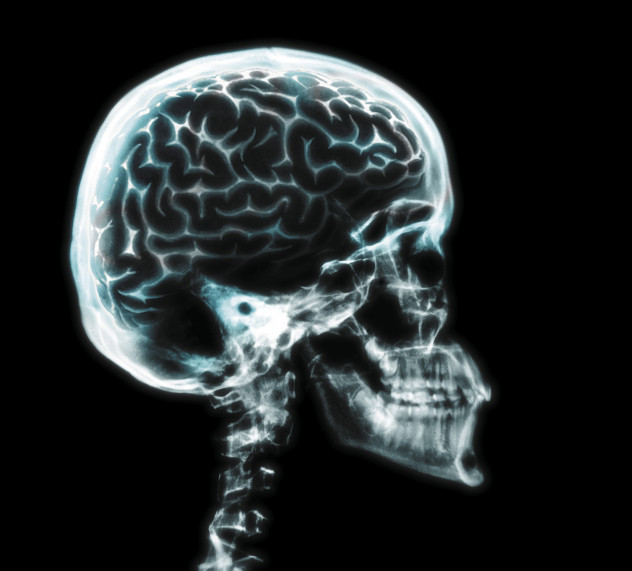
We’ve talked about what the brain activity of a zombie actually looks like based on their levels of functionality and their seemingly mindless hunger. But that also brings up the question of just what happens to real live people when parts of their brains are damaged, fail, or are removed altogether. How much of your brain do you actually need?
There’s a lot we just don’t know about the brain, and we absolutely don’t know the answer to this one even though possible answers seem to be, “Less than you’d think,” and “About half.” The insular cortex is part of the brain that allows us to process emotions and become aware of our conscious existence. When it comes to a man named Roger, though, who’s also known as “Patient R,” he’s missing not only the majority of his insular cortex but also his medial prefrontal cortex and his anterior cingulate cortex.
What all that means is that, theoretically, he should be a zombie. The parts of his brain that govern some of the basic things that make us human, our emotions, are just missing. A battle with herpes caused the damage to his brain and, decades after brain damage that should have left him completely non-functional, he’s more or less a normal person who is capable of emotions, rational thought, and (one of the things that separates us from zombies) rationalizing events from the point of view of another person.
There are other examples, too, of people being born without certain brain structures. There’s the case of a woman who never knew she was born without a cerebellum until she was 24 years old. The only signs she had that there was something the least bit abnormal about her was that she was occasionally extremely clumsy. Scientists think that has something to do with other parts of the brain that adapt to fill in the gaps left by the other structures, but that doesn’t entirely explain at what point someone can be thought to be a zombie.
In 2014, there was the extraordinarily disturbing case of a man in the UK who was diagnosed with a tapeworm in his brain. It lived there for at least four years and spent those four years tunneling around inside his head. His problems were there—he reported strange smells and memory lapses—but he was still a functional human. If being a zombie spreads like a disease, but the human brain is capable of surviving a tunneling tapeworm, it brings up some interesting questions about just where the line is between human and irreversible zombie damage.
2Zombie Modeling And HPV

Developing a mathematical model to track the outbreak of a zombie infection might seem like pretty fanciful stuff and the type of thing mathematicians do when they’re bored, but one mathematician is putting the models to very good use. Robert Smith? (yes, the “?” is part of his name) has done some pretty extensive work on what would happen if there’s a zombie apocalypse. It’s all mathematically sound logic, and it accounts for things like birth rate, latent infections, attempts at quarantine, and what happens when quarantine fails. Mathematically, he finds that unless there’s a massively successful aggressive campaign to wipe out the zombies, we’re going to lose.
But his model, and the math behind it, isn’t just the stuff of late-night horror movies. Smith? is a mathematician at the University of Ottawa, and the work that he actually gets paid for is modeling scenarios based on the spread of communicable diseases. And, since there are a huge number of variables when it comes to predicting just what’s going to happen when the zombies come, it’s formed the basis of models that have traced the spread of diseases like human papillomavirus, or HPV.
Because HPV can spread in a number of different ways, that introduced a whole new set of difficulties in modeling the spread of this disease as opposed to one that spread through one method only. Smith? drew on his previous work modeling the zombie infection in order to come up with the accurate models of HPV transmission. And he also says that it’s been an invaluable tool in reaching out to others that might not have been interested in math previously, which was an added bonus to his non-traditional work.
1Architecture And Renewable Zombie Energy
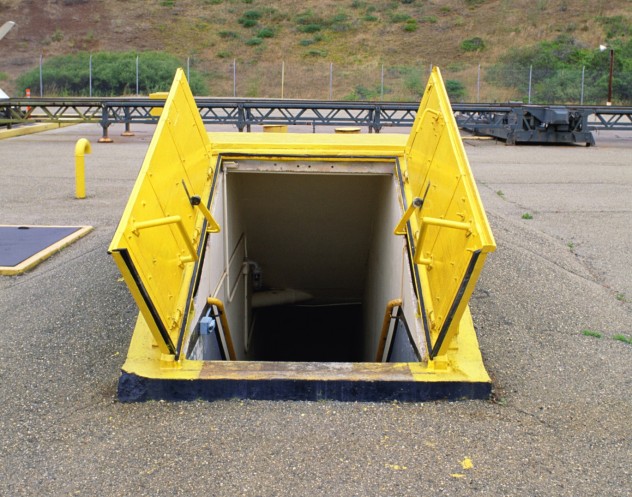
So, the zombie apocalypse has happened, a huge percentage of the human population has been wiped out, and a handful of survivors are trying to rebuild society amid the remnants of our fallen civilization. Science is preparing us for that, too.
The design firm Architects Southwest was behind a contest that asked architects across the world to design and show off their best post-apocalyptic homes. The entries were pretty incredible, ranging from impenetrable shelters that fold up into a convenient backpack to the adaptation of an oil silo to keep the home’s occupants safe from the zombies outside.
Some entries outlined plans for adapting ships and boats into mobile, self-sustaining homes, while others went for a mountain retreat. And, because nothing should be allowed to go to waste when you’re rebuilding the world, there was one that looked at the possibility of using zombies to power everything in the house. The entry was a vertically arranged home with a base that consists of a series of turbines. Zombies are lured into the turbines by the promise of tasty bunnies and, once they’re in there, they keep walking around and around, the rabbits safely out of reach. As they walk, they turn the turbine and generate the power needed for the home.
Fanciful, perhaps, and inventive, definitely. If zombie science shows us anything, it’s that even in the face of the apocalypse and hordes of mindless killing machines, we’ll at least have creativity on our side.
